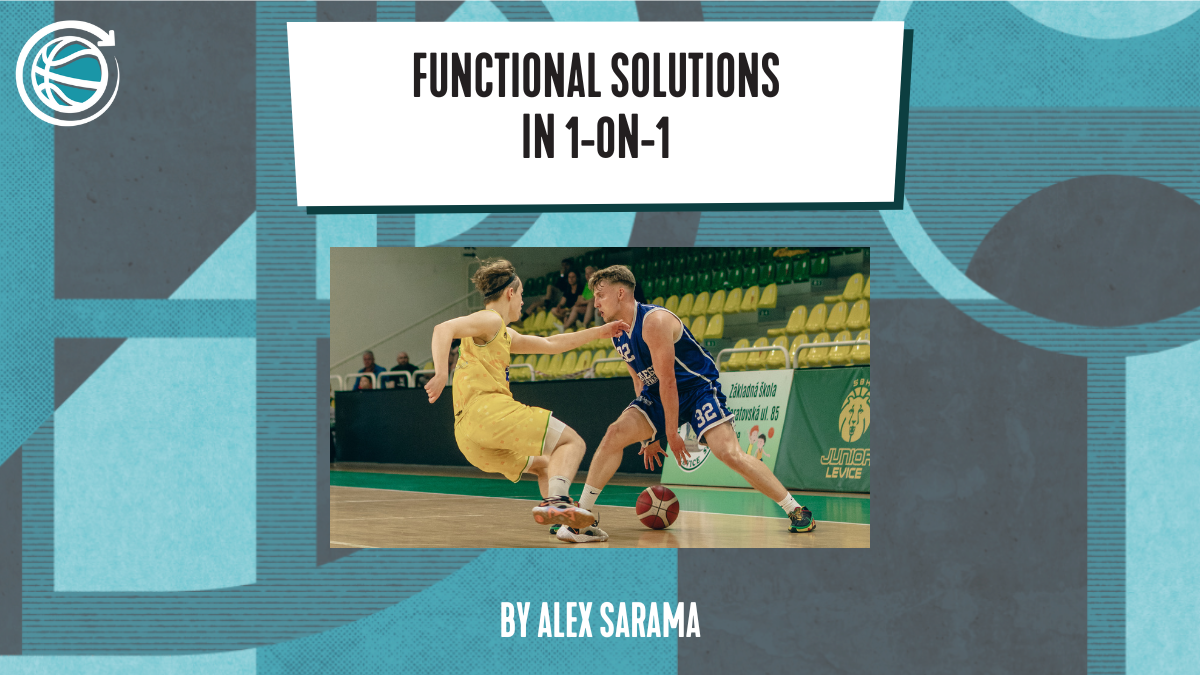Functional Solutions in 1-on-1
August 5, 2024
1-on-1 can be one of the simplest, but most effective ways, to improve functional solutions in driving, shooting and finishing. Functionality implies the ability of a player to satisfy the conditions of the interacting constraints present at a particular moment of a possession. A player exhibiting functionality may be able to consistently adapt with an appropriate movement solution for the situation they are faced by. This is the opposite to possessing sound “fundamentals”. Rather than repeating one highly similar solution over and over again, the goal is to develop adaptive players with multiple functional solutions.
One of the easiest way to develop functionality is playing more 1-on-1 within practice. Any opportunity to play 1-on-1 should be encouraged and promoted: especially before and after practice. The irony is often seen in how many players will play 1-on-1 before a practice starts, before going into formalised drills without defense when the coach starts the practice. With everything we know about skill acquisition, this approach is actually not as conducive for learning than the free-play environment that is cultivated in “pre-practice 1’s”.
An application of the CLA can improve 1-on-1 games greatly. Firstly, finding a way for players to continually change their match-up will lead to more varied skills emerging. This is because playing against different players naturally shapes a greater number of emergent movement solutions. The affordances playing against a 6ft 3 guard or a 6ft 6 wing will be very different for both the offense and defense. This could simply be achieved by saying to the players that they must change partners after each player has had two repetitions on offense within their pair.
Secondly, intention may be the most influential task constraint. In this instance, shaping the intention of the players within 1-on-1 may be far more conducive than ‘just playing 1’s.’ The easiest way we do this at London Lions is implementing our shot spectrum within the 1-on-1 activity. Players may be constrained to only scoring gold (rim finishes) and silver medals (3PT shots). Occasionally, we will mix it up and allow bronze medals, but placing such an emphasis on the rim finish drastically changes the aggression of the players in getting to the rim, which simultaneously helps the defense greatly.
Affordances from activities like cone dribbling or the execution of 1-on-0 dribbles moves are incredible narrow in-scope. They are not authentic given these situations are predetermined by the coach. As Tom Parry has stated, many of the dribble and finishing moves explicitly taught in basketball are often not even functional.
Old school ‘check the ball’ 1-on-1 can be enhanced through the effective manipulation of constraints in a number of different ways. In addition to a shot spectrum and frequently changing match-ups, simply introducing a five second shot clock can lead to more representative behaviours emerging. Additionally, limiting the playing area can increase the challenge point and ensure the offense do not venture into spacings that would be unrealistic within the 5-on-5 game.
With younger players, simply provide an advantage. Allow the offense to start a step in front of the defense and see what happens. More 1-on-1 within youth basketball is perhaps the lowest hanging fruit in developing more skilled finishers, more competent drivers, and more aggressive on-ball defenders.
In E45 of the Podcast, Alex outlined why it’s about developing functionality vs fundamentals:

Leave a Reply Cancel reply
Community Ideas
CATEGORY
browse by
Skill Acquisition
Practical Ideas
Principles of Play
News
The Theory
Author
browse by
Adam Omiecinski
Alex Sarama
Kareem Kalil
Jonas de Bruyne
CATEGORY
News
browse by
The Theory
Community Ideas
Skill Acquisition
Practical Ideas
Principles of Play
Adam Omiecinski
Alex Sarama
Kareem Kalil
Jonas de Bruyne
Author
browse by